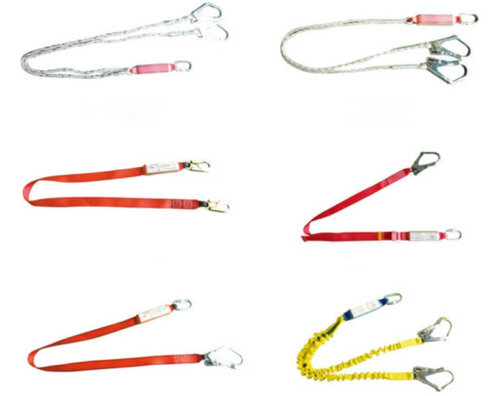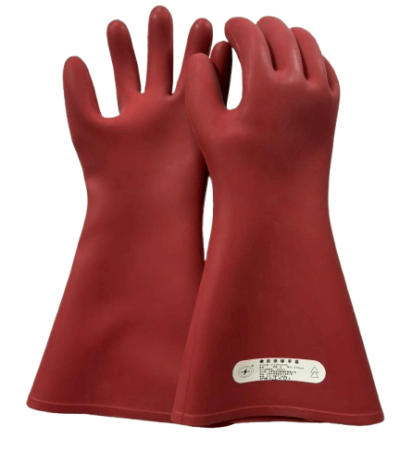Safeguarding Lives: A Comprehensive Guide to Confined Space Entry Equipment and Intelligent Rescue Systems

Confined space operations face severe risks like toxic gases and poor ventilation. This blog analyzes critical technologies—IoT-enabled gas monitors, mechanical rescue systems, and AI-driven predictive analytics—aligned with global standards (OSHA 1910.146, ISO 23616:2024). Discover innovations like nano-sensors and rescue robots, offering actionable strategies for hazard prevention, compliance, and next-gen emergency response.
Air Respirators and Firefighter Gear: Technology Shield for Life Protection

Explore the cutting-edge technology of air respirators (SCBA) and firefighter gear, featuring top brands like MSA Safety, Dräger, and Honeywell. Learn about NFPA 1981 and XF124-2013 standards, carbon fiber cylinders, and smart monitoring systems for emergency safety. Discover expert insights and recommendations for lifesaving equipment.
Ultimate Guide to Fall Protection Carabiners: Standards & Selection Tips

Carabiners are the critical link in personal fall arrest systems. This guide compares auto-locking, D-rings, O-rings, and screw-lock carabiners, decoding their designs, compliance standards, and best-use scenarios for safer high-altitude operations. 1. Key Types & Standards A. Auto-Locking Carabiners (e.g., Delta 508014) Design: Spring-loaded gate with 17–18 mm opening, forged aluminum/zinc alloy. Standard: EN 362 […]
Personal Fall Protection Systems: How 3 Core Components Save Lives at Height

In high-risk industries like construction and maintenance, a personal fall protection system is the last line of defense against catastrophic injuries. Comprising three critical components—full-body harnesses, fall arresters, and anchor points/connectors—this system works synergistically to absorb impact forces and prevent ground contact during a fall. This blog breaks down each component’s role, compliance standards, and […]
EN 355 Standard: A Complete Guide to Choosing Certified Fall Arrest Energy Absorbers

As workplace safety regulations evolve, selecting compliant fall protection equipment becomes critical for mitigating risks in high-altitude operations. This guide dives into EN 355, the European standard governing energy absorbers, and provides actionable insights for choosing certified devices that align with safety and legal requirements. What Is the EN 355 Standard? EN 355:2002 is a […]
Everything You Need to Know About EN 361: The Ultimate Guide to Fall Arrest Harness Standards

The EN 361 standard, mandatory under EU PPE Regulation 2016/425, defines rigorous design, testing, and certification criteria for full-body harnesses in fall arrest systems, ensuring forces ≤6 kN during falls through dynamic load tests (100 kg mass, 4m drop), static strength validation (15 kN for 3 minutes), and corrosion resistance checks (48-hour salt spray). Critical […]
How to Choose the Best Disposable PPE Kit: Multi-Industry Applications from Healthcare to Food Processing

Disposable PPE kits (Personal Protective Equipment) are critical in many industries, particularly in healthcare, food processing, and other high-risk sectors. As awareness of hygiene, safety, and employee protection continues to grow, the demand for disposable PPE kits has steadily increased. However, understanding how to select the most suitable PPE kit for different work environments can […]
The Importance of Respiratory Protection and How to Choose Wisely – Safeguarding Your First Line of Defense

Introduction: Invisible Threats, Visible Health Risks From industrial workplaces and laboratories to daily life, harmful substances like dust, toxic gases, and microorganisms constantly threaten our respiratory systems. According to the World Health Organization (WHO), over 650,000 global deaths annually are linked to occupational respiratory diseases. Workers in industries such as welding, mining, and chemical manufacturing […]
Electrical PPE Beyond Gloves: A Complete Guide to Full-Body Insulation Protection for Electricians

In high-voltage electrical work, insulated personal protective equipment (PPE) is the lifeline for electricians. While many assume “insulation PPE = gloves,” comprehensive safety demands full-body protection. This guide decodes the complete system of electrical insulation gear, aligned with international standards and industry best practices, to help professionals select compliant and effective solutions. 1. Core Principles […]
Global Insulation PPE Standards Comparison: Technical Differences Between GB, IEC, ASTM, and EN

As industrial safety awareness grows worldwide, insulation personal protective equipment (PPE) standards have become critical for ensuring workplace safety. However, technical requirements, testing methods, and application scenarios vary significantly across regions. This article provides an in-depth comparison of China’s GB standards, the International Electrotechnical Commission (IEC) framework, the American ASTM standards, and the European EN […]
Safety Challenges in the Renewable Energy Sector: Insulation Protection in PV Installation and Wind Turbine Maintenance

As the global energy landscape shifts toward decarbonization, the rapid expansion of photovoltaic (PV) and wind power systems has exposed critical safety risks linked to inadequate insulation protection. Statistics reveal that 12% of PV system fires result from insulation failures, while cable aging in wind turbines accounts for frequent electrical accidents during maintenance. This blog […]
Why Must Insulating Gloves Be Paired with Leather Gloves? The Science Behind Dual-Layer Protection

Introduction In high-voltage electrical work, using insulating gloves alone results in a 42% higher risk of electrocution (National Grid Safety Report, 2024). Industry regulations mandate that insulating gloves must be paired with leather gloves (protective gloves) to create a dual-layer defense against electrical, mechanical, and environmental hazards. This guide breaks down the science, standards, and […]
